
For Gaza & Palestine


Официальный сайт KRAKEN: http://kraken2tr7eohw6acwwp2apxtgqtoy67gzggozvuzmglc7yq35ysboad.onion/ (заходить через Tor Browser)
Кра́кен, один из самых крупных российских даркнет-рынков, стал новым лидером после закрытия Hydra в 2022 году. Этот платформа предоставляет доступ к широкому спектру товаров и услуг, включая наркотики, поддельные документы, и услуги по отмыванию денег.
Для того чтобы попасть на Kraken, покупатели используют Tor с луковой маршрутизацией для обеспечения анонимности. После этого им необходимо зарегистрироваться на платформе и пополнить свой биткойн-баланс. Этот баланс используется для совершения покупок у продавцов на сайте.
На Kraken пользователи могут найти разнообразные товары и услуги по доступным ценам. Среди предлагаемых товаров наркотики, поддельные документы, услуги по отмыванию денег и многое другое. Платформа предоставляет возможность покупки товаров и услуг в удобное время и месте.
Кра́кен обеспечивает высокий уровень безопасности для своих пользователей. Система шифрования данных и анонимность позволяют пользователям чувствовать себя защищенными при совершении покупок на платформе. Кроме того, Kraken предоставляет поддержку и конфиденциальность для всех своих пользователей.
Kraken – это новый лидер на российском даркнет-рынке, предлагающий широкий выбор товаров и услуг для своих пользователей. Благодаря высокому уровню безопасности и анонимности, платформа стала популярным местом для совершения покупок в даркнете. С Kraken пользователи могут быть уверены в безопасности своих транзакций и конфиденциальности своих данных.
Подробнее: KRAKEN САЙТ
Официальный сайт KRAKEN: http://kraken2tr7eohw6acwwp2apxtgqtoy67gzggozvuzmglc7yq35ysboad.onion/ (заходить через Tor Browser)
Kraken стал одним из самых популярных даркнет-рынков в России после закрытия Hydra в 2022 году. Он был создан как альтернатива другим рынкам и быстро набрал популярность среди пользователей, заинтересованных в покупке наркотиков, поддельных документов и услуг по отмыванию денег. Название “Kraken” отсылает к легендарному морскому чудовищу, символизируя его огромное влияние на рынке.
Для доступа к Kraken покупатели должны использовать браузер Tor с луковой маршрутизацией, чтобы обеспечить анонимность своих действий. После этого им нужно зарегистрироваться на платформе и пополнить свой биткойн-баланс, с которого будут списываться средства при совершении покупок у продавцов. Это обеспечивает безопасность и конфиденциальность для пользователей.
На Kraken представлены различные категории товаров, начиная от наркотиков и поддельных документов, и заканчивая услугами по отмыванию денег и другими незаконными деятельностями. Пользователи могут выбирать из широкого ассортимента товаров и услуг, что делает платформу привлекательной для различных категорий клиентов.
Как и на других даркнет-рынках, безопасность на Kraken играет важную роль. Платформа принимает меры для защиты личной информации пользователей и обеспечения конфиденциальности их данных. Тем не менее, всегда существует риск использования незаконных услуг и возможность попасть в проблемы с законом.
Kraken – это один из крупнейших российских даркнет-рынков, предлагающий широкий выбор наркотиков, поддельных документов и услуг по отмыванию денег. Пользователи могут получить доступ к платформе через Tor, обеспечивая анонимность своих действий. Важно помнить о рисках, связанных с использованием подобных платформ, и соблюдать законы и правила безопасности в сети.
Подробнее: KRAKEN ONION
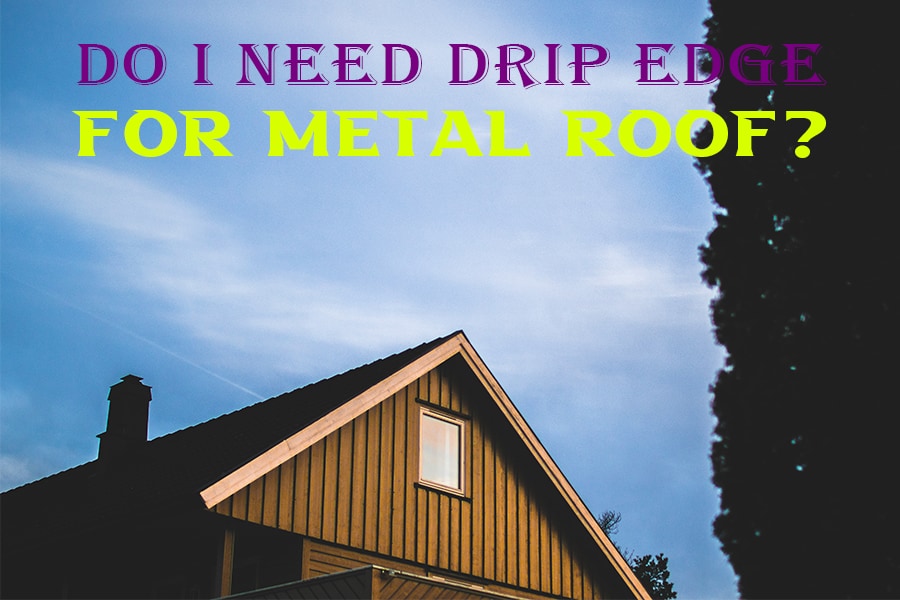
Roofing shields us from the elements. They provide a secure enclosure and keep us safe from weather extremes.
We must make sure that roofs are durable. Several guards are put into ensuring that roofs stay put over long periods.
The durability of your roof is dependent on more than just the roofing material. All materials become vulnerable to weather extremes over time, whether through corrosion or wear and tear. It is why roofs must stay put for long periods.
One of the measures taken to ensure that roofs last long is using drip edges. Drip edges are metallic extensions placed at roof edges.
These extensions prevent water from entering beneath your roofing components, thereby protecting your roof.
So, Do I need drip edges for a metal roof?
It depends on the distance between the roof edge and the fascia and whether or not the edge is angled. If the distance between the edge and the fascia is less than an inch, you need to install a drip edge. The edges need to be angled downward if you don’t want to install a drip edge.
Drip edges are important, not just for durability and preventing runoff water from entering underneath the roofing material.
The primary function of drip edges is to keep runoff water away from the roofing fascia, as it causes corrosion—other benefits of installing a drip edge beyond just preventing the fascia from falling apart.
Drip edges are a necessary addition to any roof. What other benefits do they offer?
When it rains or snows, water tends to get held up on the roofing edges. It is especially true for slanted roofs.
Water may bet lodges, especially if the edges barely receive enough sunlight to vaporize the water during the day.
Water on the edges is not good. If the water is logged for days, the roof edges will unravel. Water on the edges is bad, especially for wooden roofs. It causes rapid degradation, and you will need to replace the roofing frequently.
The water is actively channeled away from the edges and directly into the gutter with drip edges. The result is a dry and durable roof edge.
Animals such as ants, bats, and squirrels love staying in attics. Attics are safe and warm and provide adequate protection from the weather. These creatures will stay in attics during winter.
These animals may cause damage to your property. Ants may start feeding on ceiling boards. Bumblebees may drill holes in the boards and cause the roofing to look unsightly.
You must protect the roofs by installing a drip edge. Drip edges make it virtually impossible for ants and other creatures to get into the attic by providing a tight seal.
It is unlikely that ants will pry the boards to access the attic, as they are usually properly reinforced.
Drip edges make homes look better. These fixings give the roofs a better aesthetic, especially if they are color-coordinated with the roof.
A house without a drip edge looks rough and unfinished. The metallic fixings add a bit of polish and enhance the house’s overall look. The drip edges are not only functional but also fashionable.
Installing a drip edge is something that you can do at home. All you require is the right tools and a bit of ingenuity.
The most important thing to remember when performing an installation is safety. You must keep yourself free from danger by following basic safety requirements and common sense.
If you cannot install a drip edge safely, or if you lack the tools, you should ask a professional to do it for you.
These are the steps that you should follow:
Align the drip edge to form an angle. The alignment should ensure that runoff water gets channeled to the gutter. When installing, ensure that the flange is angled towards the ground.
When mounting the drip edge, it is important to start with the ends. All you require is a hammer and 12-inch nails. You may use a rubber hammer to avoid denting the roofs and the drip edge during installation.
You might not always get the correct length with drip edges, so you should trip the excesses for a custom fit.
How do you know where to cut the excess? Measure about one inch where the drip edge overlaps. Mark the point using a felt tip. Saw off the tip using a cutting tool.
Install the drip edge on the rakes. Secure the edge in place using 12-inch nails.
Sealing is the most important part. If you do not seal the roof properly, you will be required to start all over.
How do you get the perfect seal? Use a light cement mix on the roof. Spread the cement evenly over the roof.
Add weights on the roof to ensure that there is sufficient compression. The cement will secure the drip edge.
There are three types of drip edges:
1. L-shaped drip edge
These are drip edges that have a 90-degree angle.
2. Type F drip edge
An extended leading-edge characterizes the F-type drip edge. It is perfect for rake edges.
3. Type D drip edge
The drip edge is T-shaped and has its flange positioned at the bottom.
Fascia is a board placed on the vertical portion of the roof. It serves many purposes.
The gutter and drip edge protects the fascia from runoff water from the roof, maintaining dryness and durability. The boards might deteriorate over time due to the elements and natural wear and tear.
These boards usually last for years, but eventually, you will need to replace them. How can you tell when the fascia is due to be replaced?
Fascia is durable enough to withstand a lot of damage over the years. These boards are not impervious to some drilling insects such as bumblebees or birds such as peckers.
Fascia is chemically treated to keep insects away, but with time, they become vulnerable. Small holes can be sealed using commercial sealing agents, but you will need to replace them once the fascia develops large holes.
Cracks on the fascia could mean that the wood is old. It could also mean that it is waterlogged and needs to be replaced.
Cracks appear in fascia when it is exposed to extreme conditions. The water inside expands and warps the wood, causing bloating and cracks. If it happens, you will need to replace the fascia.
Mold is a sign that the wood was not treated properly. It could also mean that the wood did not meet moisture resistance requirements.
You must purchase durable wood from a reputable vendor. You can consult a handyperson on the best type of wood to use for fascia.
If you notice a growth in the wood, you should replace the fascia immediately.
Fascia will begin to rot if exposed to moisture for long periods. Moisture will cause the wood to unravel quickly, and it will start collapsing in chunks.
Replacing the fascia is relatively simple. When replacing fascia, you should use cured hardwood that can withstand extreme weather. What is the procedure?
Start by removing the drip edge and the gutters. Do not worry. The drip edge and gutters are reusable.
Removing fascia is simple. All you need is a hummer to pry the mounting nails out of the wood.
The dimensions of the new fascia are measured out and trimmed into size.
Sealing refers to adding layers of protective coating to the wood. The coating will protect the wood from mold, fungi, insects, pecking birds, bumblebees, among other insects. Leaving wood unsealed makes it vulnerable to insects.
Once the fascia has been replaced, install the gutters and the drip edge.
It is important to ensure that roofing material lasts long. There are several protective measures to ensure that roofs are durable and safe.
Drip edges serve an important function, and they keep water away from roof fascia. Run of water will erode the fascia over time, and it will cause it to deteriorate and fall off.
With all roofing material, you must install a drip edge. Metallic roofs don’t require drip edges if the roofing extends an inch over the edge.
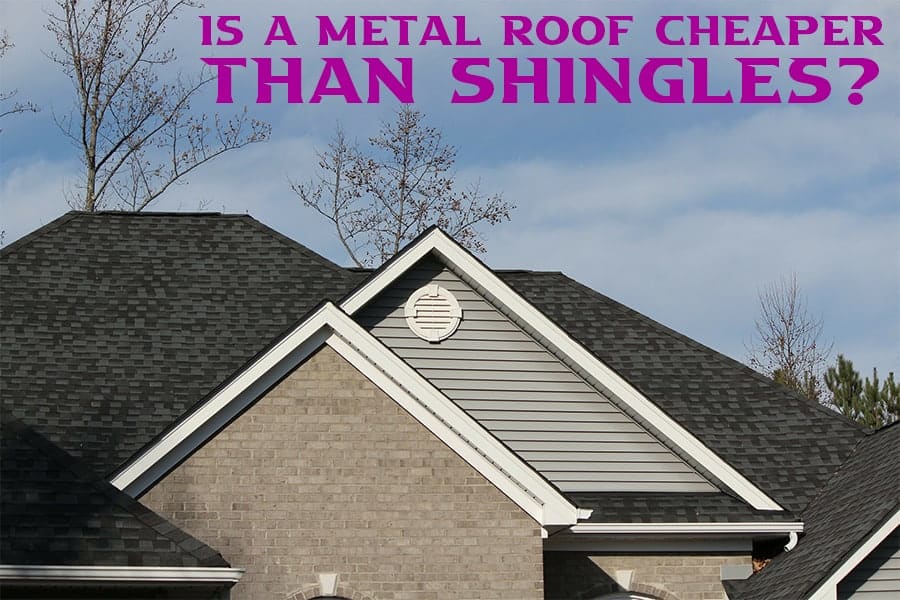
Roofing costs differ widely depending on the materials used and the intricacies of the roofing style. Some roofing designs can be expensive, despite the materials used.
The most popular choice for roofing in recent times is metallic and shingles. Many people have adopted these roofing styles for various reasons. People seem to be moving away from traditional tile roofing designs.
Roof shingles are particularly common in the United States. The roofing design is popular as it creates neat aesthetic patterns.
Metal has been the standard roofing material for many years now. Various metal roof designs offer flexibility and customization.
Roofing costs have sky-rocketed due to supply chain issues. The demand is as high as it has ever been. Many consumers try to get the most affordable options.
So, is a metal roof cheaper than shingles?
Metal roofs are more expensive than shingles. The cost of metal roofs is quite high. It is because metal roofs are more durable and less malleable. On average, a metal roof costs just over three times the cost of shingles per square foot. Shingles are certainly the cheaper options.
Shingles come in a variety of materials and designs. Some patterns are simple, and others are quite intricate.
Shingles have been used in roofing for a long time, since medieval times, and in much Victorian age architecture. These materials have an incredible aesthetic and have many other excellent properties.
Shingles are prevalent in many European countries and also in the United States. It is popular because it is quite affordable.
Here are the common types of shingles:
There are two popular varieties of asphalt shingles. In the United States, fiber-glass-based asphalt shingles are popular. In Europe, bitumen is the preferred choice.
Asphalt shingles are coated in special hydrocarbons. The hydrocarbon coat offers sufficient protection against the elements.
The biggest criticism of asphalt shingles is that they are not durable. The best quality asphalt shingles will last 60 years. Many asphalt shingles unravel after 30 years.
These hydrocarbons melt in the sun after many years. Rainwater washes the hydrocarbon layer away, leaving the asphalt exposed. As a result, the weather deteriorates. Asphalt rots in certain conditions.
Stone shingles are the most durable variety of shingle roofing. The best quality stone shingles will last four centuries before you must replace them. Most Victorian-era architecture used stone shingles.
Stone shingles have interesting patterns. The individual shingles are curved to have special and detailed designs.
Some designs are simple and practical.
Unlike other materials, stone shingles do not rot. They also don’t require an additional layer of protection like asphalt or wooden shingles. What causes the slates to unravel?
Stone shingles are destroyed when the individual stones come loose over time. It happens as a result of weathering. The cement underneath the stones becomes weak, and consequently, the stones begin to fall off.
Wooden shingles are made of cured hardwood. The wood is treated through several industrial processes and finished with a protective oil-based coating.
The coating seals the wood and protects it from the elements.
Coating wood is important, as it keeps wood pests away. Pests such as termites can burrow into the wood and feed on it. They also lay eggs inside the wood. Uncoated wood deteriorated rapidly after a short period.
Wood shingles are the easiest to customize.
You can have beautiful and very detailed patterns. It makes for aesthetically pleasing architecture.
The biggest disadvantage of wooden shingles is that they need maintenance. You need to apply a fresh coat of oil every once in a while to prevent the roof from rotting.
Fiber-cement shingles are not as common as they once were. Certain fiber-cement shingles were outlawed, as they were deemed dangerous. Asbestos shingles were banned as the material is carcinogenic.
Solar shingles are made of photovoltaic cell material. These shingles act as roofing and generate electricity to power the building.
Solar shingles were invented in 2009. These are environmentally friendly panels that facilitate the production of clean energy. They work better in places that receive a lot of sunlight.
Just like shingles, metal roofs come in different types. These roofs are classified according to the type of metal. There are four primary types of metal roofs:
If you are searching for durable roofing material, you should invest in steel roofs. These are roofs made of an alloy of iron and carbon.
Steel roofs are popular because of their low maintenance. These materials could go for years without being replaced.
The initial cost of steel roofs is high, but in the long run, they are better. It is because steel roofs have a low maintenance cost.
The most you would be required to do is paint them every once in a while. Steel is very resistant to oxidation. It does not rust easily.
Zinc roofs are known for their aesthetic properties. The roofs are beautiful and look quite decent.
They are also very durable. Compared to steel, zinc is easily oxidized. The property is an advantage.
Zinc eventually develops a thin layer of oxide that protects the metal from the elements. With time, you do not have to paint zinc as the metal patinas.
To patina means to change color due to oxidation when a roof patina forms a beautiful green or blue color.
The biggest disadvantage of zinc is that it is prohibitively expensive.
Aluminum roofs are some of the least expensive iron roofs. These materials are lightweight and malleable. It makes them easy to work with, as you can easily bend them into shape.
Aluminum offers resistance to rust and corrosion. The property makes it an ideal roofing material.
A huge disadvantage of aluminum is that it dents easily. It provides little resistance to impact due to its malleability.
Copper is excellent roofing material. Like zinc, copper will patina and change its shade after some time.
With copper, you get a highly durable roofing material. It offers resistance to rust. Unlike aluminum, copper does not dent easily.
Copper has a brilliant aesthetic when it is new and gets better as it develops a thin oxide layer. It makes the copper look great. Unfortunately, copper is costly roofing material.
Shingles are popular, as they have several advantages. These include:
Shingles are very cheap compared to other roofing options. Shingles only cost a third of metal roofing costs.
Shingles are comparatively easy to install. They require a simple laying and stacking procedure.
You can customize shingles into beautiful patterns and wonderful designs. The shapes of each shingle can be custom designed.
Shingles can be designed to suit different roofing styles.
Using shingles as roofing material comes with its disadvantages. These are:
Compared to metal roofs, shingles are not as durable. They typically begin to unravel after 30 years.
Shingles must undergo constant maintenance to ensure that they do not fall apart.
Shingles easily develop mold and algae. It makes them unattractive.
If they are not secure, a strong gust of wind could blow shingles away.
Metal roofing has several advantages. They include:
Metal roofs are incredibly durable. A metallic layer will outlast nearly all roofing alternatives.
Metal roofs are quite tough. They offer maximum resistance to impact and can withstand compression.
Metal roofs are easy to install. Metallic sheets are cut into sizes and installed in blocks.
Metal roofs provide high resistance to fire. Metals do not burn easily.
Just like shingles, metal roofs have their shortcomings. They include:
Metal roofs are expensive when compared to other options.
Metal roofs tend to get loud in the rain. They can be a nuisance, and the rain makes them uncomfortable.
Metal roofs can easily unravel at the seams if they are not correctly installed.
Roofing costs are as high as they have been in a long time. It has prompted consumers to search for the most affordable roofing options.
There are several roofing options, but the most popular options are shingles and metallic roofing. These options have their unique characteristics and advantages. They are also relatively affordable when compared to other materials.
Of the two options, shingles are more affordable. They cost only about a third of the cost of metal roofs per square foot. The affordable nature of shingles makes them the ideal option if you intend to save money.
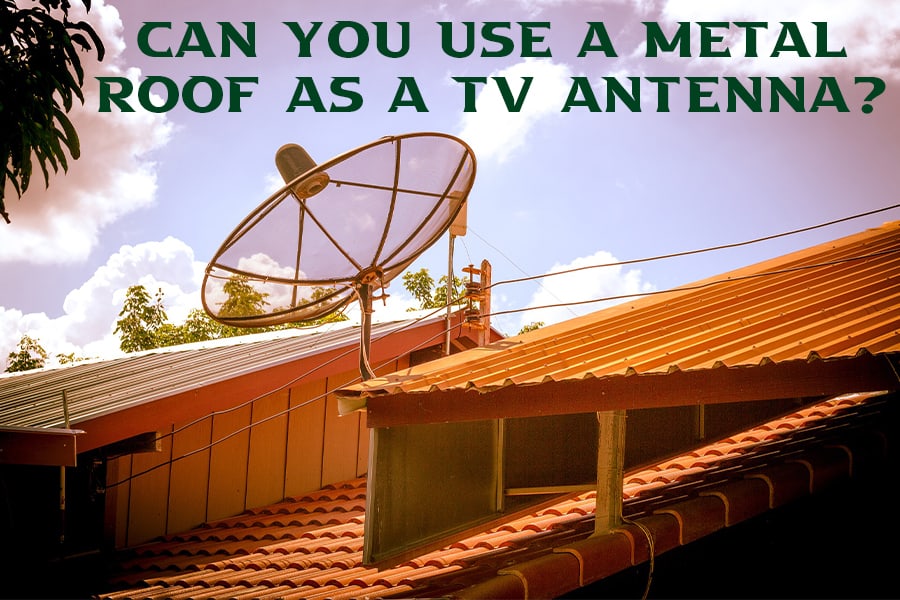
Metal is known to have excellent conductive properties. Metals have free electrons that they use to conduct electrical current.
TV antennae are made of metal. They are used together with receivers. The antenna receives transmitters emitting signals from a broadcaster and the signals. These signals can either be digital or analog.
An antenna can receive two types of frequencies, depending on your region. The Very High-Frequency band lies between 47 to 250 megahertz. The Ultra High Frequency lies between 470 to 960 megahertz.
Most satellite television companies provide their clients with an antenna that they mount outdoors, specifically on the roof. The antenna is made of metal and has a receiver that picks the frequency.
So, can you use a metal roof as a TV antenna?
You can technically use a metal roof as an antenna, but it is unlikely to work properly. To use a metal roof as an antenna, the roof should be very large and concave. Even if your roof checks these boxes, you would need to orient it to the direction of a transmission tower.
There are many types of TV antennas. These antennas function differently from the radio antenna.
Television antennas can either be used indoors or on rooftops. These antennas are mounted at optimal locations to receive excellent broadcasting quality.
Some antennas are more effective than others. They are specifically designed to receive an array of frequencies. Some antennas can capture HD quality signals, while others are capped at SD quality.
Here are the popular types of antennas:
Yagi TV Aerials are the most common antenna in the EU and Australia. These aerials have multiple variations; however, the same working principle.
You get a long pole known as the boom on the aerial’s body.
There are multiple rib structures on the aerials that have signal receptors. The body resembles a centipede.
Each signal receptor picks up a certain band of signals. The receptors have dedicated frequency bandwidths. It helps optimize the range of signals that the aerials can detect and transmit.
Log Periodic aerials are synonymous with digital televisions. These serve as resonators, with the incoming radio wave’s electric field pushing the electrons in the rods back and forth, generating oscillating voltage waves in the rods.
Log periodic aerials are quite similar in appearance to Yagi TV aerials. Log Periodic Aerials are typically triangular-shaped.
They have two rows of receiver antennas. Unlike the Yagi TV antenna, the Log Periodic Aerials don’t need back reflectors and dipoles.
There are specific Log Periodic Aerials built specifically for radio signals.
High gain aerials are special devices that amplify low and medium signals and increase their quality.
These aerials can also work as repeaters where signal quality deteriorates due to the signal being shared by many TVs.
The high gain aerials have extra-long booms. They have multiple signal receptors along with the boom. The back reflectors are really large.
High gain aerials can amplify very small frequencies and makes them better.
Banded aerials are wideband antennas that can be used on any transmitters. They are ideal for places that tend to have a lot of interference due to multiple signals. Banded aerials can isolate specific signals and amplify them.
These are quaint aerials that were popular before digital TVs became popular. They are compatible with analog signals. Grid aerials are rare, as analog signal transmissions die out due to the popularity of digital TV.
Most people use either satellite or cable television. Digital television is also quite popular, despite shifting consumer tastes.
As more people migrate to streaming platforms, keeping your antenna around has several advantages.
What are these advantages?
With digital TV, you do not have to pay a monthly or annual fee to keep getting access to content. Unlike most subscription services, digital TV is free. It will save you money.
Accessing a plethora of content free of charge is the way to go. Not only is it economical, but also reliable. Over-the-Air transmissions are available in most regions so that you can enjoy content without restrictions.
Digital television enables you to access content that is exclusive to your locality. Satellite and cable channels mostly offer international content exclusively. Digital television allows you to access your local channels at no extra cost.
With digital television, you have access to channels that you cannot get on any other paid platform or subscription services. They include sports channels, local news channels, cooking shows, and movies.
Did you know that most networks have an over-the-air transmission? You can access the same channels on satellite and cable TV with your digital tv signal.
Most people watch mainstream networks on tv, and digital television is the perfect way to do so, as you do not pay anything.
If you watch only a few mainstream channels, you do not need to spend your hard-earned money on cable.
Cable and Satellite television transmit compressed signals. The compact signals are lossy. It means some deterioration or loss of signal caused by transmission over long distances.
With digital signals, you will get high-quality transmissions if you use the right antenna. It would help if you used high gain aerials. It will enable you to access up to 4K quality content at no extra cost. Invest in a good antenna.
Digital television does not require an internet connection. It is also not affected by slow internet connections. Most other platforms like streaming networks require you always to be connected to the internet.
Digital television doesn’t require you to pre-download content either. It saves you storage space on your device. There are no minimum specifications for televisions to use digital signals either.
Unless you are using your antenna optimally, you will struggle to get decent reception. At one point, everyone has struggled to get decent reception from the antenna for different reasons.
How then do you optimize signal quality?
Ensure that the antenna is connected properly. The outdoor antenna is rust building up on the connecting terminal. It causes the antenna to function sub-optimally.
You can correct most signal losses with a simple rescan. Running a scan once every few weeks could be beneficial to discover new channels.
If you cannot get a steady signal despite several channel scans, move the antenna to a different location. Some places suffer from heavy signal interference, and moving the antenna can be beneficial.
You might be struggling to bet the best signal because of being too close to a transmission box. If you can’t move the antenna away from the transmission box, an attenuator will help improve the signal quality.
An amplifier will be beneficial if you share the same signal between several televisions. The amplifier will magnify the signals, and everyone will receive better and more consistent image quality.
If you have tried all the methods above with no success, it is beneficial to purchase a better antenna.
Though satellite TV has seen a rapid decline of users over recent years, it is still quite popular. Consumer tastes have been steadily shifting across generations of viewers, and now, fewer people are watching television.
Here are some of the disadvantages:
The advent of streaming services has seemingly devastating effects on satellite television. People can access their desired content at any time, thanks to streaming platforms like Netflix, Hulu, HBO, Disney +, etc.
You can only watch content on your television in real-time. Once the content passes, that’s it. Streaming allows you to access content anywhere at any time. You can also download content and watch it later.
In case of bad weather, your signal quality will deteriorate. You will be unable to watch television during storms or strong winds. It makes streaming services more appealing.
TV antennas have unique qualities that make them functional and practical for the job. You cannot just use any piece of metal and expect to get good results.
It is possible to use a metallic roof as a TV antenna. The roof would need to be large, concave, and face the direction of a transmission tower. The signal quality would still be inferior, and there is no guarantee that the method would work.
It is better to use an actual antenna for the best results.
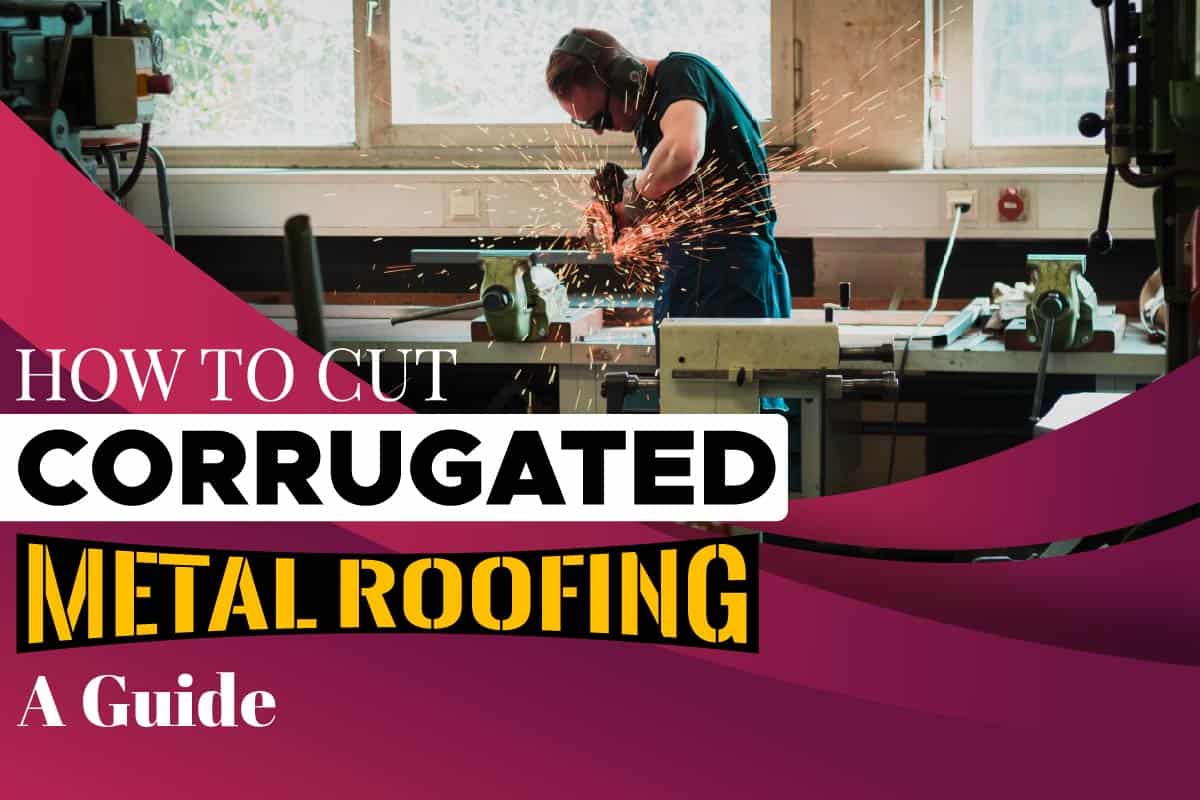
There are several ways to cut corrugated metal roof sheets, and these are the use of power tools like a circular saw, the use of a pair of snips, and the use of angle grinder. Each type of cutting method has its benefits, and they all help you achieve precision cut.
Wear your gloves before proceeding, and put on your welding mask. Place the corrugated metal sheet on a working surface area such as a sewing table. Make sure nothing blocks your saw blade, especially underneath the cutting line.
Unlock the blade guard, and make sure it is a sharp-toothed metal with the blade, designed for cutting metals. You may want to go for a diamond blade because it produces the cleanest cut. Brace the corrugated metal with your second hand and start cutting.
Hold the metal at least two feet from the saw, pull the trigger and make the first incision cut with the saw. Guide the saw slowly through the corrugated metal and allow the excess component to fall freely as you cut. The circular saw cutting is best suited for cutting long lengths of straight-lined corrugated metal.
Aviation slips are also referred to as compound or tin snips. They come in different shapes and sizes and are designed to cut through metal.
Since snips are color-coded, the yellow one is used for cutting straight lines while the green snips will cut to the left and red snips will cut right. Make sure you wear your thick gloves when cutting with snips. Hold one side of the metal with the other hand, which will help position it for cutting. Place the two blades of snips on the edge of the metal you want to cut.
Press and release snip simultaneously as you cut through. Release the handle o push the metal, and as you cut, lift the excess section of metal to create space for more cutting.
To use the angular grinder to cut a corrugated sheet, attach your diamond wheel to the angular grinder. Set the metal section you are cutting on the edge of the work surface, then tighten the grinder blade and put both hands on top of the angle grinder.
Hold the angle grinder at 45 degrees towards the corrugate metal sheet and turn it on. Push the grinder slowly across the path you are cutting until you complete the cutting. The benefit of using angular grinder is that it creates very smooth edges. It would help if you put the safety button on when using his device.
Make sure you choose the right type of metal cutter for your job because the final result of your cutting will largely depend on the type of cutting machine used. The smoother the blades or the smaller the space between blades, the smoother the cutting you will likely get. Also, the thicker the corrugated metal, the more pressure you need to apply when cutting.
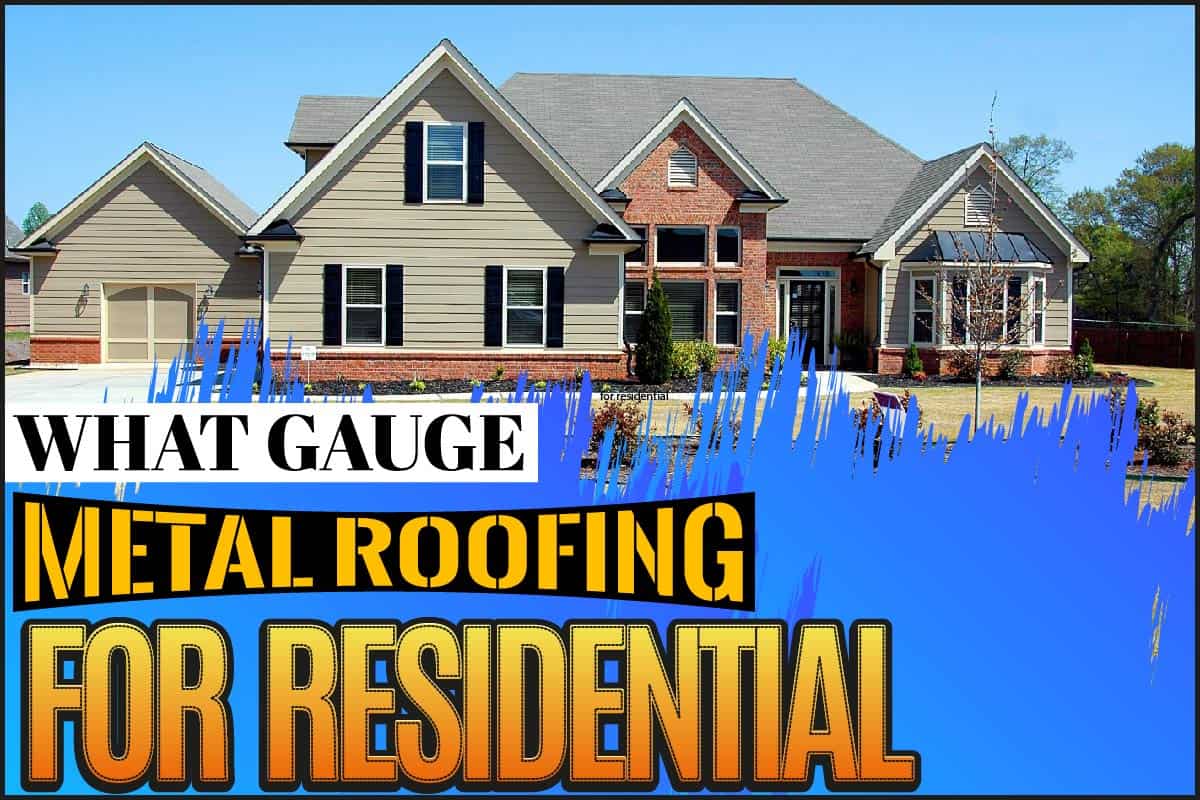
Manufacturers and professional roofers often express the thickness of metal roofing sheets in “Gauges.” The 22-gauge is considered the thickest in the US, while the 29-gauge is regarded as the thinnest. It is believed that most homes in the USA use the 29-gauge metal roofing, but areas that are prone to hail-stones, high winds, and many other terrific environmental elements require thicker gauge roofs for homes.
The secret to answering this question is to check whether the thicker or thinner roof gauge is better for roofing. The higher the gauge number, the lighter the roofing material, and it can be not very clear, especially for first-time homeowners to choose the right thickness. For instance, a 24-gauge is thicker than 29-gauge metal roofing. The confusion may also come because different types of metals have different types of measuring standards.
Today, the most standard gauges available for metal roofing are; 22, 24, 26, and 29. The 24gauge and 26-gauge are the best-selling gauges for home roofing. Most beautiful new homes that come with standing seam roofs will likely have 24-gauge thicknesses. If a house is done with an exposed fastener panel, it may likely have a metal roofing thickness of 24, 26, or 29.
The 24-gauge sanding seam metal roofing seems to be the best metal roofing system. It is the second thickest option; it has the advantage that the fasteners are completely concealed, making it the best weather-tight roofing panel.
Unfortunately, this roofing system is the most expensive option of the available options. This option also comes with a costly paint finishing which is PVDF/Kynar 500 paint. This standing seam metal roofing may cost between $2.5and $3.50 per sq. ft.
If you opt for a standing seam roof, you will likely get 24-gauge roof steel, but if you choose an exposed fastener panel, you will likely get a 24, 26, or29 gauge roof metal.
Though the 29-gauge roofing is helpful in some cases, most expert roofers wouldn’t recommend it. The reason being that his meal panel can be damaged easily by weather elements like a hail storm. It also comes with a very much less snow load and less wind uplift rating. Similarly, the expansion and contraction of lengthy panels can cause severe damage.
If you reside in a high wind and snow region, the risks will be very high even though the 29-gauge is the cheapest. The cost difference between a 29-gauge and 26-gauge is between 9 and 20% of the material cost, but a 26-gauge roofing panel is far better than 29-gauge roofing metal.
A 26-gauge metal roofing may perform well if it sits on a wood substrate, but It still can’t compare with a 24-gauge metal roof. If your home is located in a region of high winds and snow, a 24-gauge metal roofing makes more sense. If you want added protection like Kynar paint, a 24-gauge metal roofing system will indeed work best.
It is not right to just assume hat he 22 or 24-gauge metal roofing material is the best for you, you may want to consult with your professional roofer for some advice on the most appropriate option base on your budget and area of residence. To know more simply get connected with Metal Roofing Chattanooga.
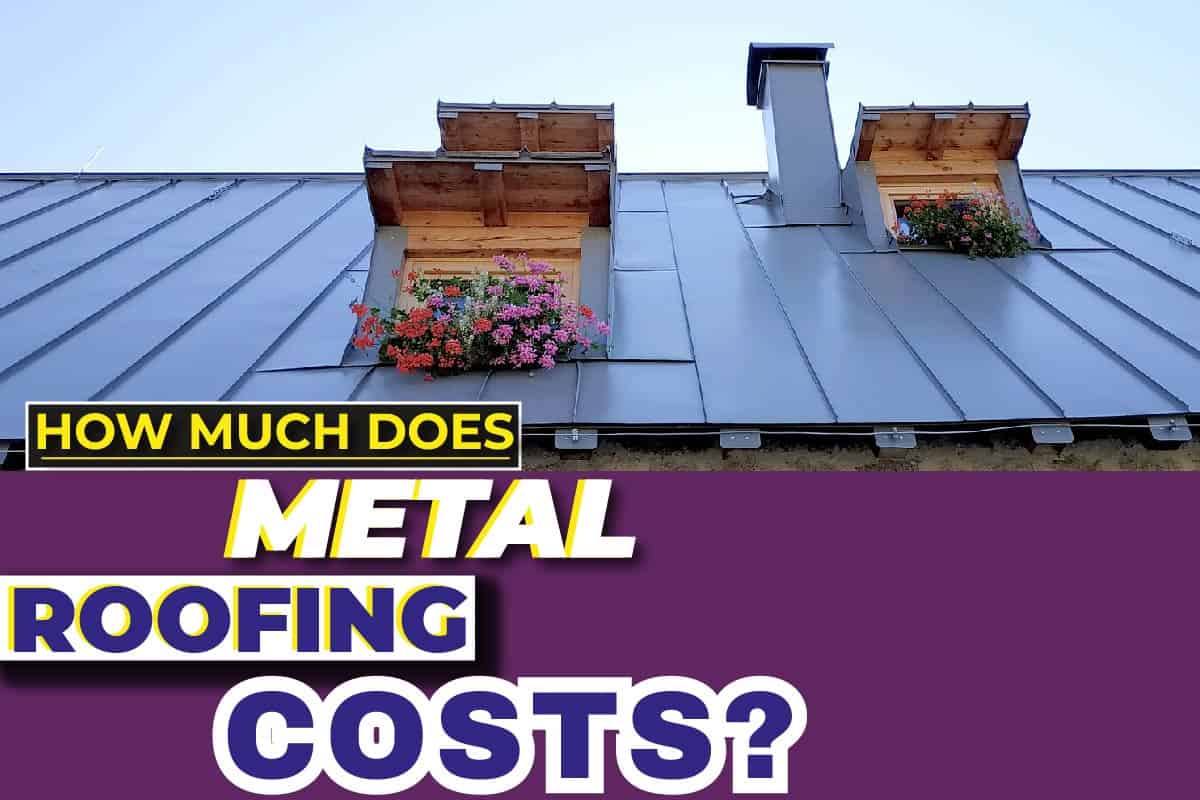
The costs of metal roofing will depend on several factors, including the prices of roofing materials, the roofing project’s size, and expenses of workmanship services provided by the roofer. Experts estimated the costs of metal roofing between $9,545 and $43,819. The price per sq. ft of metal roofing is estimated at $5-$22.
When it comes to metal roofing costs, the type of metal may also determine roofing costs. For instance, Copper metal roofing ted to be the costliest, with prices ranging from $1400 to $2200. This is followed by Tin metal roof, which costs between $325 and $1465.
The Zinc metal roof is next to the tin metal roof in costs, as it goes for between $565 and $1100. Aluminum roofs come next, with prices ranging from $325 to $575. Steel metal roofs can cost between $335 and $450, while Corrugated metal roofs can cost $180 and $250. A standing seam metal roof is the cheapest option, and it goes for between $40 and$120.
Part of the costs of metal roofing is maintenance, and it is essential to go for a lasting meal roof type with lower maintenance costs.
Ideally, you should coat your metal roof with galvanized zinc or a mixture of galvanized zinc and aluminum. It is believed that a mix of Aluminum and zinc coating on the metal roof will make your roof last longer than the one coated only with galvanized zinc. This situation also means that the maintenance costs of the metal roof coated with aluminum and zinc mix are lower than those coated only with zinc.
Thicker coatings will always make your metal roof last longer, even though it will cost a little more in the beginning. Regardless of the type of coating you use, exposure of your roof to environmental elements like wind, chemical rain, and excess sunshine will eventually deteriorate the coating, and that means you may need to recoat.
You don’t have to coat with expensive coating, even a polymer coating like Kynar is very popular and can make your metal roof work like new. To clean a metal roof with polymer coating, simply use a mild soap plus and apply a hose or pressure washer to clean the roof. Avoid the use of abrasive cleaners like steel wool and wire brushes for cleaning metal roof because they can scratch and leave serious marks on the roof.
It is important to put quality ahead of costs when it comes to installing metal roofing. Quality materials will surely extend the life span of your metal roof, and the use of professional roofing service will also ensure that roofing errors are prevented. Errors unroofing handled by amateur roofers can speed up the deterioration of the roofing materials, and this can also increase the costs of maintenance in the long run. With proper handling of roofing angles and elevation, the professional roofer will consider a number of factors when completing a roofing project. Contact Metal Roofing Chattanooga to know more.
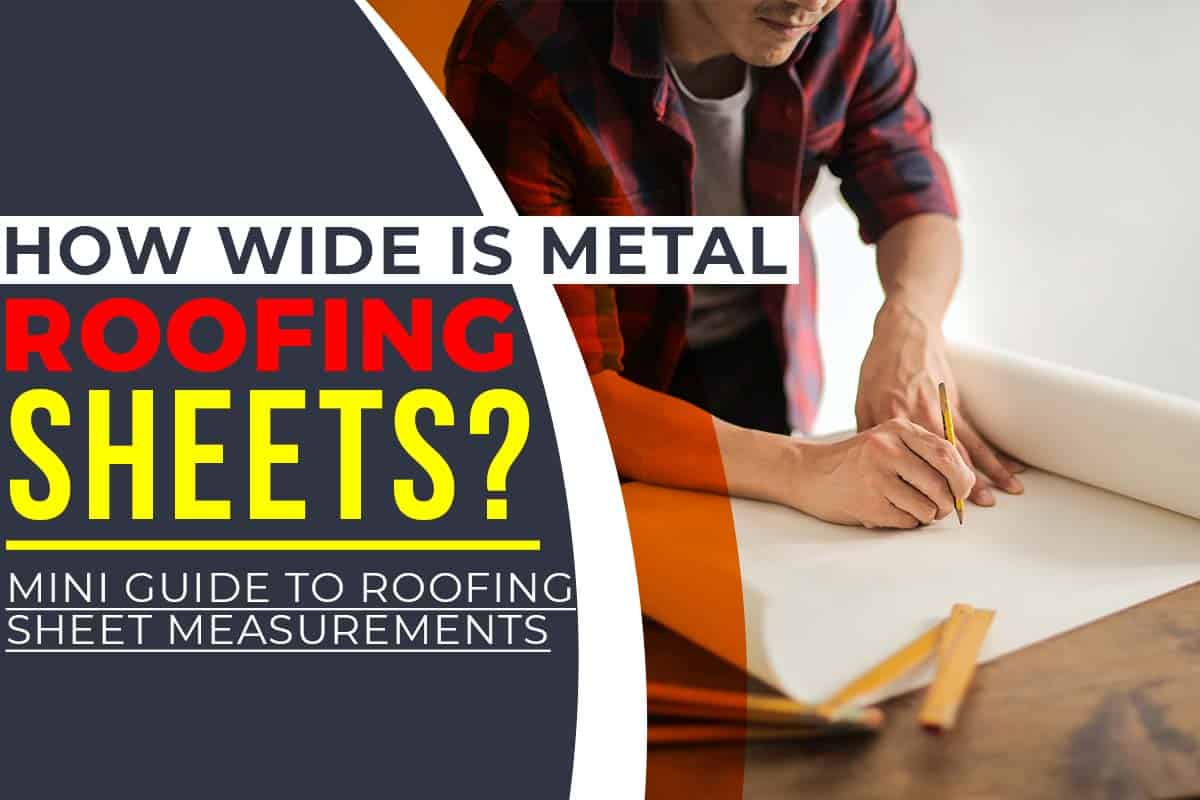
Knowing the width of your metal roofing is essential before you hire professional roofers. It helps you have an accurate estimation of the size of roofing materials you will need for your complete roofing.
Metal roofing sheets should be 36″ wide, which is the standard width for sheets in the US. You will need to determine the overlap required so that each of the roofing sheets can conveniently rest on the adjacent sheet and avoid gaps within the roof. The roofing sheets can also vary based on the roof angle, climate, type of sheet ad exposure, and adverse weather conditions like the wind.
Since a corrugated metal roof is one of the cheapest and most widely used types of metal roofs, it can be easier to work out this metal roof type’s width. The simplicity and strength of corrugated metal sheets make them widely acceptable for roofing. It is also widely available and comes with low-cost maintenance. It is available in different thicknesses and sizes.
Your metal sheets must overlap during installation to provide a continuous and watertight finishing. With watertight finishing and no gap, water, wind, and other adverse weather elements will not penetrate. It also ensures structural integrity of the roofing.
The overlap of your roofing sheet must be taken into consideration when measuring the width of your roofing sheet. The first step is to measure the length and width of the area that requires roofing. You can get his measurement from the builder’s plan or stretch your tape along the roof’s structural components to obtain the length and width.
Record your values on length and width measurement and then add measurements at the edges of overlap before rounding up the dimensions in “feet measurement.” If, for instance, you measure 21″ by 10″ as length and width of the entire area and an additional overlap of 6″ x 1″ in length and width are required at both ends, then your final measurements will be 26″ x 11″ in length and width respectively. Multiply the length and width measurement of the roof to get your surface area.
Divide your total roof area measurement by the area of the single sheet, and you will know the total number of sheets you require for your roofing.
The width measurement formula for corrugate metal sheet roofing should also work for other types of metal roofing materials. The thickness of roofing material and some other factors may affect your readings but make sure you measure the overlap in mind o get an accurate measurement and reasonable estimates of the width and number of roofing sheets you need. Experts also suggest that you order 10% extra roofing sheets to cover up for your errors in measurements and damaged sheets. If you are in doubt of your measurement accuracies, contact professional roof installers or builders for assistance. Some of these experts may help you measure your roof’s width and estimate the total roof sheets you need a no extra fee.